I am using MVVM+C pattern to build my app. Currently I am facing a problem with changing the native back button title and image of navigation bar to the custom image without the title. I've tried a lots of solutions what I was able to find, but nothing set the different title or even an image. I've ended up with this code in AppDelegate.swift:
let navigationController: UINavigationController = .init()
if #available(iOS 13.0, *) {
let appearence = UINavigationBarAppearance()
appearence.configureWithOpaqueBackground()
appearence.backgroundColor = .backgroundColor
appearence.shadowColor = nil
appearence.shadowImage = nil
navigationController.navigationBar.standardAppearance = appearence
navigationController.navigationBar.scrollEdgeAppearance = navigationController.navigationBar.standardAppearance
} else {
navigationController.navigationBar.isTranslucent = false
navigationController.navigationBar.barTintColor = .backgroundColor
navigationController.navigationBar.shadowImage = nil
navigationController.navigationBar.shadowColor = nil
}
// This code is not working at all, always get "Back" as a default with default image =====
let backButtonBackgroundImage = UIImage(named: "backButton")
navigationController.navigationBar.backIndicatorImage = backButtonBackgroundImage
navigationController.navigationBar.backIndicatorTransitionMaskImage = backButtonBackgroundImage
let backBarButtton = UIBarButtonItem(title: "", style: .plain, target: nil, action: nil)
navigationController.navigationItem.backBarButtonItem = backBarButtton
// =========
navigationController.navigationBar.tintColor = .primary
window?.rootViewController = navigationController
window?.makeKeyAndVisible()
Also, I've followed the official documentation but without any success. As default I've set the navigation bar as hidden (because is not needed for multiple times) and I am showing it in ViewWillAppear and hiding in ViewWillDisappear methods.
Is there someone who has an idea of what's going on? Thanks!
This is what I get with the new code:

SOLUTION: After using code from Scott I was able to change the image and look of the navigation bar but I lost the ability to swipe back. After adding this code to the UINavigationBar extension I was able to get it back:
extension UINavigationController: UIGestureRecognizerDelegate {
@objc func goBack(sender: Any?) {
self.popViewController(animated: true)
}
override open func viewDidLoad() {
super.viewDidLoad()
interactivePopGestureRecognizer?.delegate = self
}
public func gestureRecognizerShouldBegin(_ gestureRecognizer: UIGestureRecognizer) -> Bool {
return viewControllers.count > 1
}
}

